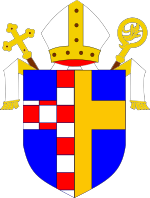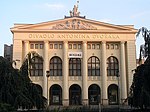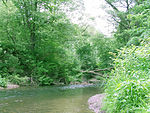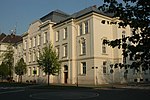Lower Vítkovice
OstravaOstrava-City District

Lower Vítkovice (Czech: Dolní oblast Vítkovice) is a national site of industrial heritage located in the Vítkovice district of Ostrava in the Czech Republic. It includes an extensive industrial area Vítkovice ironworks with a unique collection of industrial architecture. A set of three successive parts - coal mine, coke ovens and blast furnace operations - also called Ostravian Hradčany, after Hradčany, the Castle District of Prague. The area is registered in the list of European cultural heritage, and was placed on the Czech Republic's list of tentative UNESCO World Heritage Sites in 2001 under the name The Industrial Complexes at Ostrava.
Excerpt from the Wikipedia article Lower Vítkovice (License: CC BY-SA 3.0, Authors, Images).Lower Vítkovice
Vítkovická, Ostrava Vítkovice
Geographical coordinates (GPS) Address Website External links Nearby Places Show on map
Geographical coordinates (GPS)
| Latitude | Longitude |
|---|---|
| N 49.82 ° | E 18.28 ° |
Address
Dolní oblast Vítkovice (Vysoké pece Vítkovice)
Vítkovická
706 02 Ostrava, Vítkovice
Moravia-Silesia, Czechia
Open on Google Maps









